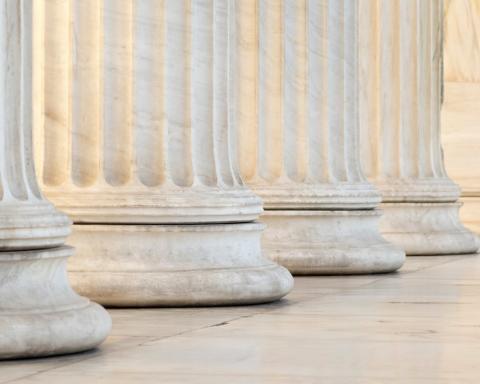Today, insurance companies that cover patients' medical bills commonly receive discounts from hospitals and other health care providers. Michael K. Beard, The Impact of Changes in Health Care Provider Reimbursement Systems on the Recovery of Damages for Medical Expenses in Personal Injury Suits, 21 AM. J. TRIAL ADVOC. 453, 454 (1998) (cited in Arthur v. Catour,Nos.97920, 97946 cons., slip op. at 19 (Ill.July 21, 2005) (McMorrow, C.J., dissenting)). Consequently, the initial hospital bill of a personal injury plaintiff might be notably higher than the amount actually paid by the plaintiff's insurer. Should this benefit be passed on to a negligent defendant, by limiting the plaintiff's recovery to the discounted amount? Or should the plaintiff be able to seek the amount of the initial hospital bill, regardless of the actual costs incurred? In other words, who deserves the windfall?
The Illinois Supreme Court avoided answering this question directly in its recent disposition of Arthur v. Catour, but instead ruled that a plaintiff may seek all reasonable expenses for her injuries, even if those expenses exceed the costs accepted by the medical provider as payment in full. Slip op. at 1. Examining traditional policies regarding damages in the context of a contemporary personal injury lawsuit, the Court refused to grant Defendants a windfall by limiting their liability to the amount actually collected by the hospital. Id. at 5. The Court held that Plaintiff could present to the jury the amount initially billed by the hospital, provided that Plaintiff demonstrates that such an amount was reasonable. Id. at 1.
Plaintiff had fallen after stepping in a hole on a farm. Id. at 1. The original bills for Plaintiff's medical expenses amounted to approximately $19,300. Id. at 1-2. The hospital ultimately accepted $13,600 from Plaintiff's insurance carrier as payment in full. Id. Plaintiff sued the farm's owner, as well as the company that conducted the auction. Id. at 1. The trial court granted Defendants' motion for partial summary judgment, holding that Plaintiff could not seek compensatory damages exceeding those actually paid to the hospital. Id. at 2. The Illinois Appellate Court held, and the Illinois Supreme Court agreed, that the trial court should not have limited Plaintiff's damages in this manner. Id. at 3. The case caught the attention of the Illinois Trial Lawyers Association and the Illinois Association of Defense Trial Counsel, who both submitted amicus curiae briefs to the Supreme Court. Id.
The Supreme Court invoked the collateral source rule: benefits received by the injured party from a source collateral to the tortfeasor may not be used to offset the tortfeasor's liability. Id. at 4. The rationale behind the collateral source rule is that the possibility of double-compensating an injured party is preferable to giving the tortfeasor a windfall. Id. at 4 (citing RESTATEMENT (SECOND) OF TORTS § 920(a) cmt. b (1979)). The Court explained that Plaintiff was justified in seeking recovery in the amount of her initial hospital bill. Id. at 6. That amount was not necessarily unreasonable, despite Defendants' argument, because "it is not uncommon for an insurer, upon receipt of such bills, to deny coverage, leaving the patient/plaintiff personally liable for the balance. For example, the policy might have lapsed for nonpayment of premiums, or the policy may not cover some services Id. Regardless of the fact that the insurer covered all medical expenses in this case, neither the insurance coverage nor the hospital's discount could offset Defendants' liability, pursuant to the collateral source rule. Id.
The Court noted that, in order to recover all damages sought, Plaintiff needed to provide other evidence that the original amount billed was a reasonable representation of her medical expenses. Id. at 8. "[I]t is axiomatic that merely satisfying the minimum requirements for the admission of a bill into evidence does not conclusively establish that the amount of the bill in its entirety must be awarded to the plaintiff. Id. at 7 (quoting Baker v. Hutson, 333 Ill. App. 3d 486, 494 (5th Dist. 2002)).
As highlighted in Chief Justice McMorrow's dissent, the majority rule generates confusion. Id. at 11 (McMorrow, C.J., dissenting). The dissent stated that "[t]he majority gives an answer that amounts to no answer at all. The majority opinion crafts an unworkable analytical framework and arrives at a holding that represents a major change in trial practice. Id. Plaintiff now faces the murky task of presenting additional evidence that the initial bill was reasonable, even though the hospital accepted a lower amount as payment in full. Id. at 16. In turn, Defendants must argue that the damages sought are unreasonable, without contravening the collateral source rule by basing their argument upon the hospital's discount. Id. at 17. The dissent also criticized the majority's broad application of the collateral source rule, which is at odds with the purpose of compensatory damages. Id. at 12. Compensatory damages are intended to reimburse only actual losses, and are not meant to punish defendants or grant plaintiffs a windfall results that might ensue from the majority's holding. Id. at 11.
It remains to be seen whether Arthur v. Catour meaningfully answered the question of who deserves the windfall in a personal injury case.
(Copyright 2005, IICLE)








